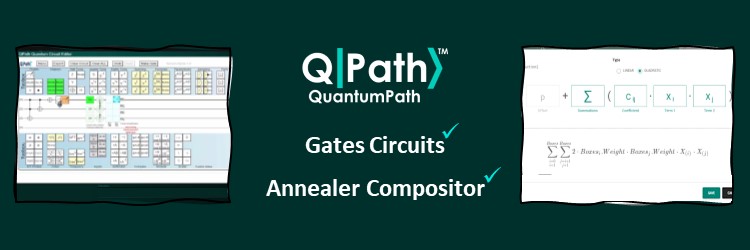Yesterday we successfully conducted the second practical webinar of the QPath cycle “The Democratization of Quantum Computing”: Introduction to agnostic quantum software development with QPath.
In this webinar Pepe Hevia presented, through three practical cases, how to design quantum circuits, define the annealing models and compose the algorithm using flows from QPath, the first quantum development & application lifecycle platform for high-quality quantum software. The practical examples developed with the QPath tools in the webinar were the following:
- Agnostic Quantum Gate Examples
- Let’s create an Agnostic Quantum Incremental operation
- Experimenting with Grover search
- Agnostic Quantum Annealer Example
- Optimize package delivery
By showing the example on how to develop annealing agnostic solutions with QuantumPath, Pepe Hevia presented QPath Annealer Compositor (QAC), the QPath graphic designer that makes possible the rapid modeling of annealing problems and the composition of the resulting QuBO matrix.
Thanks to QAC, the design of annealing problems is simplified while providing the necessary agnostic input in QPath, which makes it possible to run it on quantum annealer machines, regardless of manufacturer.
QAC makes it possible for multidisciplinary work teams to work on solutions that use annealing as a principle, focusing on the design of the solution and minimizing the implementation and its exploitation in a professional environment.
If you are interested in learning how to develop agnostic quantum software with QPath, in the coming days you will be able to access the recorded webinar here.


Recent Comments